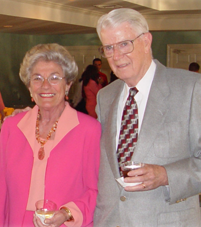By Randy Escamilla, APR
In 2004,
activists labeled The Clorox Company one of manufacturing's "dirty
dozen." They branded Clorox one of the nation's worst environmental
polluters.
Two years
later, Clorox remained the only company in the super-packaged goods industry
that had not issued a Corporate Social Responsibility report.
Green
Works or Greenwashing
Then in
2007, in an attempt to boost its green
credibility, Clorox acquired Burt's Bees and Green Works natural household
cleansing products. But critics charged Clorox, the bleach manufacturer, with
"greenwashing." Greenwashing is a term stamped on corporations who
make unsubstantiated claims about the environmental benefit of products,
services, or technology.
After
critics continued a barrage of attacks, Clorox decided to respond. Clorox
realized it needed to tell its story. The Clorox corporate communications team
prepared a focus and a framework.
Corporate
Response
Clorox
began formalizing its CR (Corporate Responsibility) strategy, began conducting
surveys, and pledged to be accountable. Their strategy needed to be robust and
transparent. Clorox began telling its story.
Clorox
bleach, the flagship product, not only kills germs and cleans clothes, but the
chemical makeup is made of the same compound as table salt and by the time it
goes down the drain 98 percent of the bleach has reverted to salt.
Rebuilding
Reputation.
Clorox
issued its first sustainability report in 2010.
It also
became the first cleansing manufacturer to voluntarily disclose all ingredients
in its company products.
Clorox
executives also wanted to establish credibility through results.
A survey found employee engagement at 88
percent.
Suppliers must certify a code
of conduct to abide by human rights, provide a safe and healthy work environment, environmental stewardship, and follow ethical practices.
Repositioned the Brita water
filtration brand to help reduce plastic water bottle waste.
Making Clorox bleach
concentrated to reduce bottle size and increase store shelf space.
Repacking Fresh Step cat
litter to reduce box size and increase store shelf space.
As a
result, Clorox is using CSR to drive business. Already, it has seen a 40
percent growth in products that are sustainable. By 2013, Clorox has a goal of
reducing its operational footprint by 10
percent.
Walking
the walk
Clorox set
out to inform stakeholders that what it's doing is true and transparent.
Activists
groups, namely the Sierra Club and Greenpeace, have now partnered with The
Clorox Company.
Clorox
has also provided more than $20 million in contributions:
$15 million corporate product
donations (crisis response).
$3.3 million foundation cash
grants.
$1.5 million cause marketing.
Also,
because nearly 100,000 people die annually from hospital-acquired diseases,
researchers at Clorox will focus on healthcare products; now it's fastest
growing market.
"I
feel that public relations communications can really drive what we're
doing," said Kathryn Caulfield, The Clorox Company Vice President of
Global Corporate Communications, Corporate Social Responsibility, and Crisis
Management.
"Transparency
is helping us set more aggressive goals. We use public relations to be more
strategic in how we talk about what we're doing," she said.
Strategic
Move
On
October 15th at the PRSA 2012 International Conference in San Francisco, the
world's largest public relations gathering, The Clorox Company released its annual
report. Download it here at: www.annualreport.thecloroxcompany.com.
Transparency
and story-telling are building trust and establishing credibility through
results.
Editor's
Note: Randy Escamilla, APR, was a
delegate to the PRSA Delegate Assembly. He holds a Master of Professional
Studies degree in Strategic Public Relations from the George Washington
University Graduate School of Political Management. You can reach him at rmeinsatx@gmail.com.
